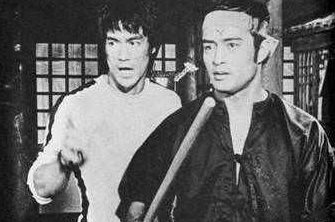The pinnacle of the learning process is to teach what you have learned. This is true not only in martial arts but in other fields of learning as well.
I recently chanced upon an escrima teacher prodding his senior students to teach, “It is only through teaching that you can further polish your art,” he said, his exasperation evident.
Indeed, many martial arts masters attest that teaching is an indispensable step toward mastery, “I learn as much from teaching and from my students as they learn from me. It’s true that teaching helps you formulate, because when you teach something you have to really have it down pat. There are so many ‘ifs,’ and ‘buts,’ that if you don’t have your stuff (shit) together, it really shows. My students provide me with a means to experiment and test my theories. They’re my guinea pigs, just I was one for Bruce [Lee],” wrote Dan Inosanto in his book Absorb What is Useful (1982).
Much is required when an individual progresses from being a student to being a teacher – from being a mere receiver to becoming the feeder of information.
A martial artist may have a perfect grasp of the material he’s been taught; he may be able to fight really well but unless he can transmit his knowledge to another individual effectively his mastery is not complete. This is why a good fighter is not necessarily a good teacher; fighting and teaching are two entirely different things.
You cannot teach what you do not know. A good teacher must have a full understanding of the physical and intellectual aspects of his art. He must not only be able to demonstrate all the techniques of his art with perfection but also articulate the principles behind them.
This is why teaching will further improve your knowledge of your martial art. You may have acquired a kinesthetic familiarity of your art by practicing the movements over and over again but when you began to teach, it is not enough that you can only show the “how,” you must also be able to explain the “why.”
Effective teaching demands diversity of knowledge. The best martial arts teachers draw upon other fields of learning to effectively teach their arts. Would it be more beneficial to the student if he sees the functioning of techniques from the perspective of physics, physiology or psychology?
Communication is the key to effective teaching. Each student is unique and a good teacher knows that the best way of transmitting knowledge is to customized instruction according to his pupil’s latent characteristics.
A good case in point is the teacher’s awareness of a student’s dominant representational systems (the ways an individual experience the physical universe). The three major representational systems are visual, auditory and kinesthetic. Visual people relate mostly to the things that they see, auditory people relate more easily to what they hear and kinesthetic people to what they feel. Some persons may have more than one dominant representational system. Knowing these things allow the teacher to tailor instruction so that the student can absorb the material in the fastest way possible.
A good martial art teacher must also understand energy and how it affects combat structure. Inosanto in his book mentioned three basic types of energy utilized in close-range drills:
Sticking Energy
This is the vital basic energy of the soft clan, for if you cannot attach to your opponent’s hand then you cannot listen to his strength and detect where he is going with his hand. Having failed in listening, how can you understand? This sticking energy can be obtained by practicing ‘Sticking Hands’ of the wing chun clan or joint hands of tai chi, kali, escrima, cadena de mano etc. The important point in sticking is to follow your opponent’s strength and not precede him.
Dissolving Energy
It is used when you ‘feel’ your opponent is using strength on you and you dissolve it away. After dissolving, the most important point is that your center part must face his side. Dissolving too fast you will fail to destroy his balance, and too slow you will fail to dissolve his force. In dissolving, firmness is concealed in softness; that is why an attack is always followed after dissolving. However this is not necessary for everyone. You can dissolve and bounce away the opponent’s energy at the same time he was about to attack.
Springing Energy
The two hands are situated on the two springs. This implies that there are two springs under the shoulder in the armpits. When force is applied to the arm it bends with the force whatever the direction of the force may be. When the force is dissolved away, the arm springs back stronger than before toward the opponent. This kind of energy, when not in use, is not shown, but once it attacks it darts like an arrow. As an old saying goes: ‘In softness it is like an arrow concealed in cotton.’ This striking energy you cannot dissolve all the time. In other words, you cannot always be on the defense. You must mix up your defense and attack so your opponent will not know what will come next. (Dissolving energy is to change the direction of his force, as the straight attack can be dissolved away by leading him left or right).”
Finally, there’s integrity. A teacher must realize that the student would literally be betting his life on the fighting techniques he is learning. A martial arts teacher therefore is morally obligated to teach his student nothing but the best stuff. Also, he must always tell his student the truth and nothing but the truth. Where did a particular technique come from? Was it battle-tested? What are its limitations? A good teacher need not invent tall tales to win the admiration of his students. After all, a teacher is but a teacher not an infallible god.





















